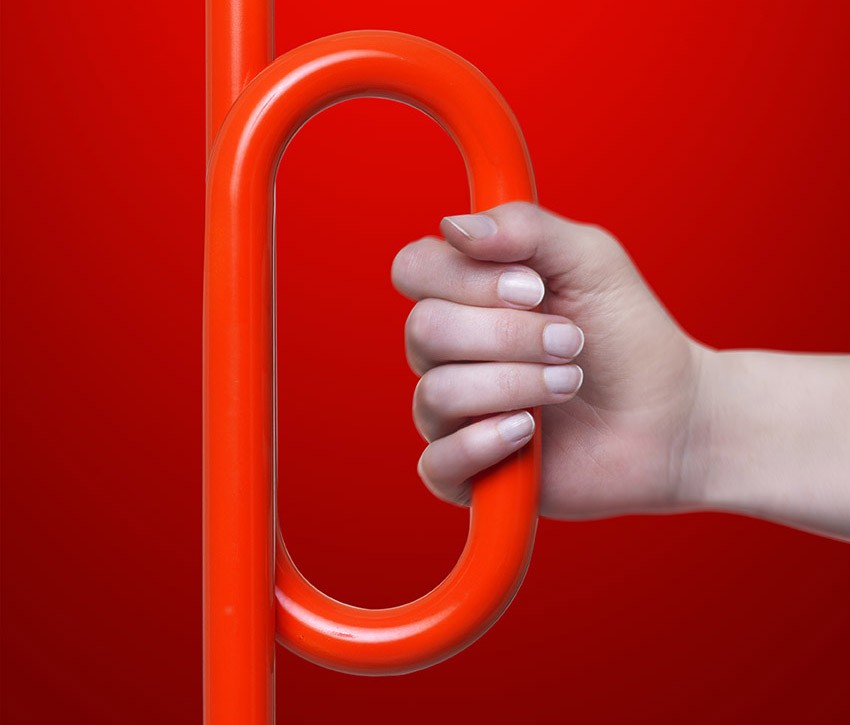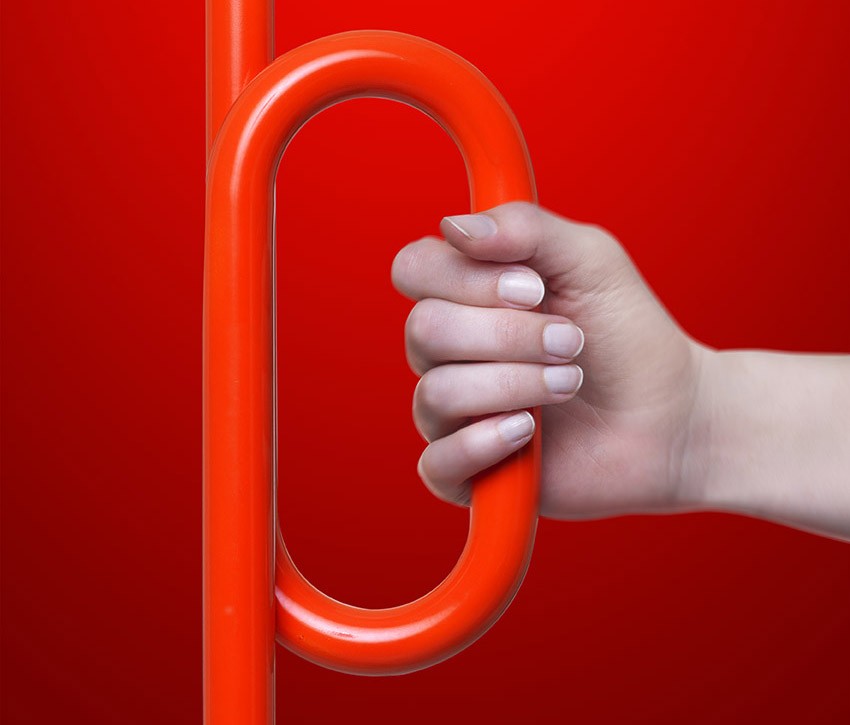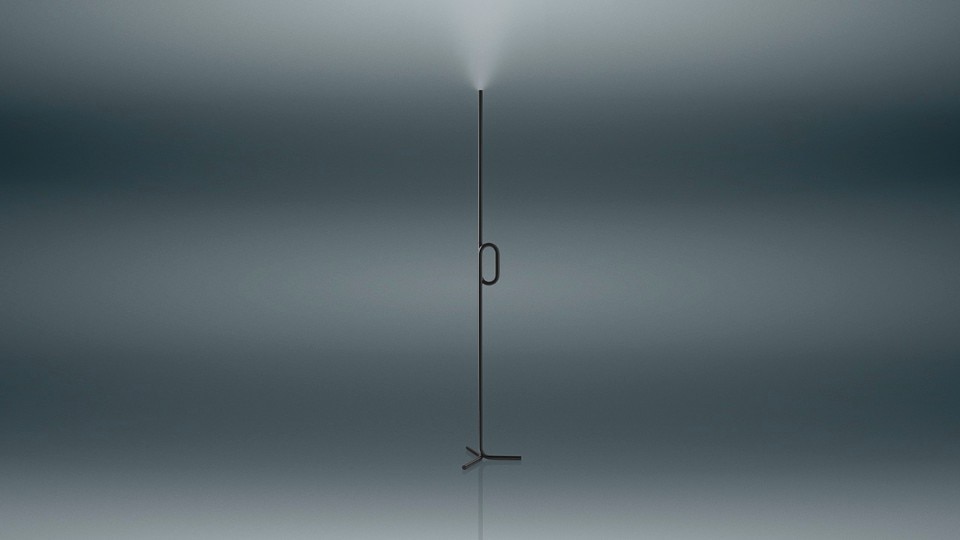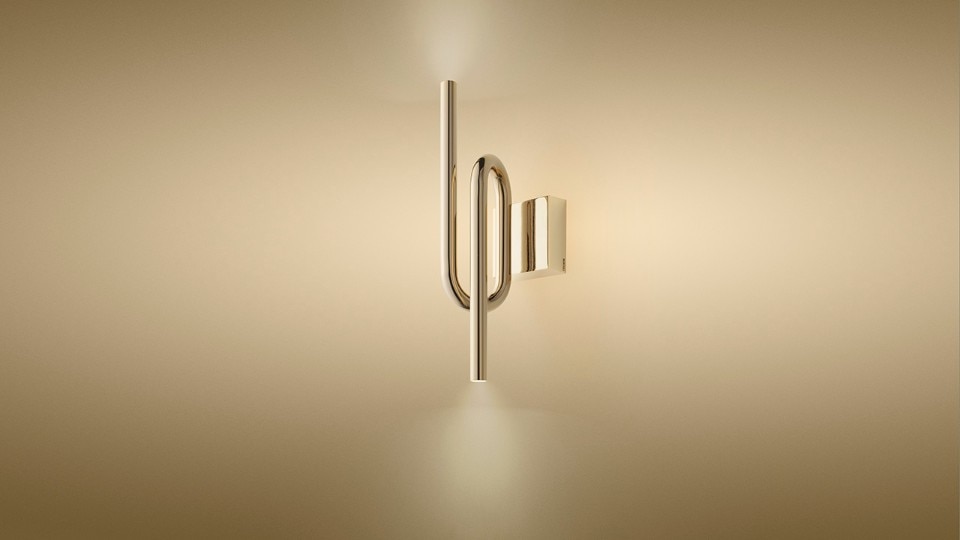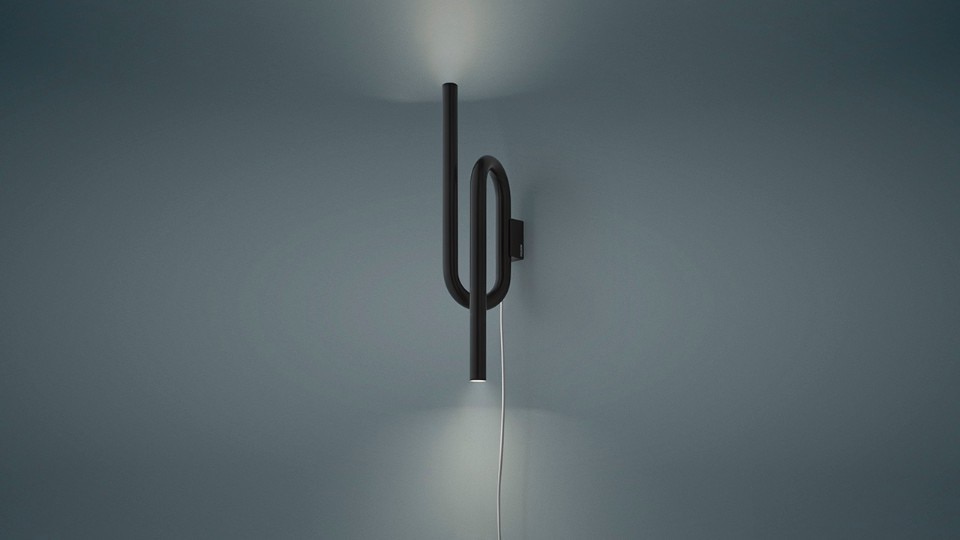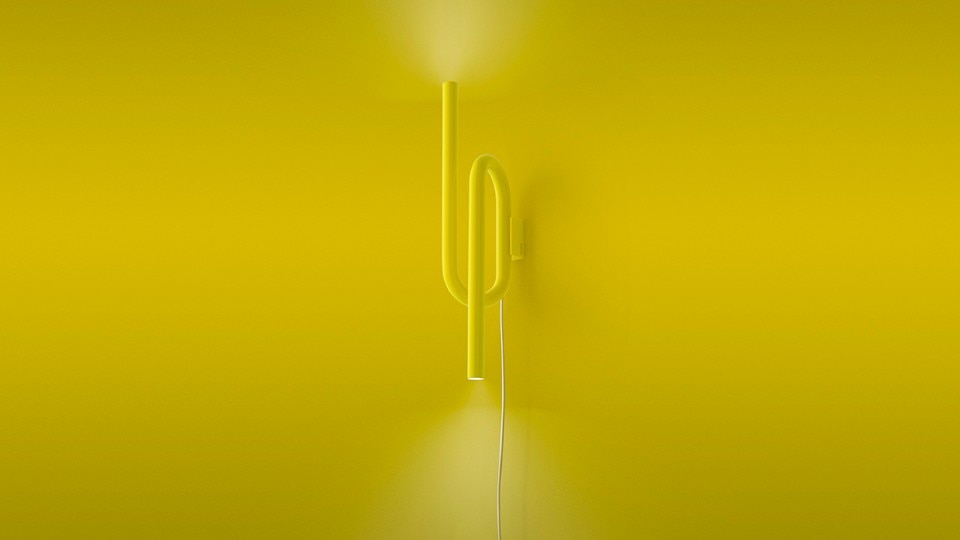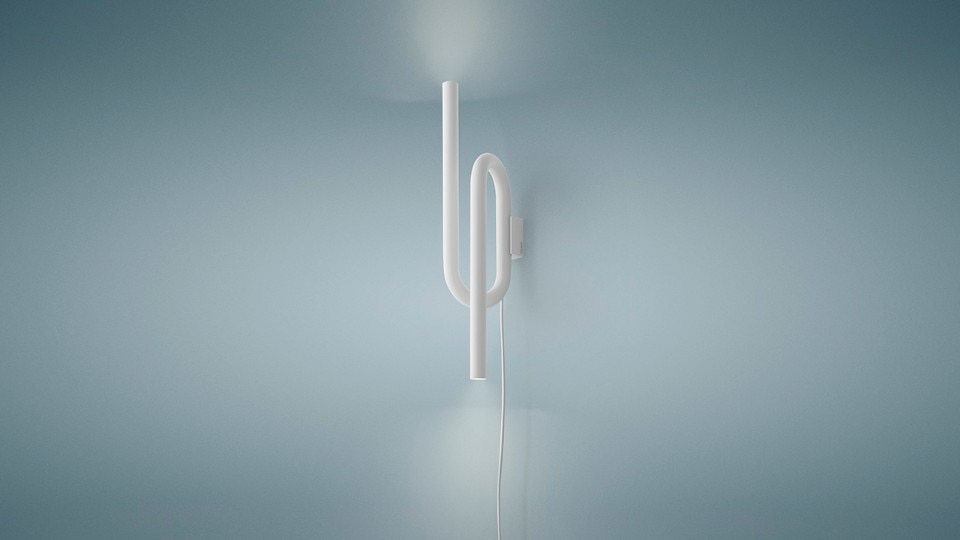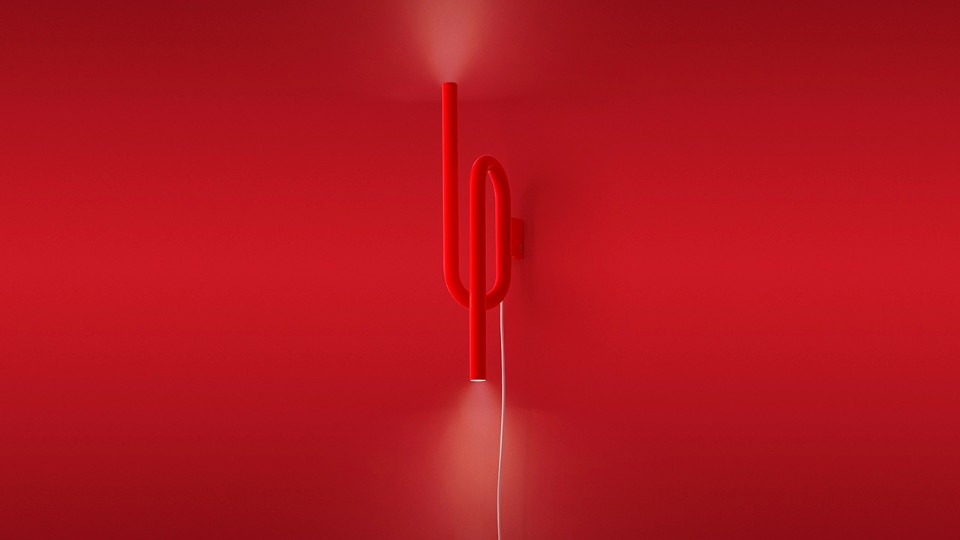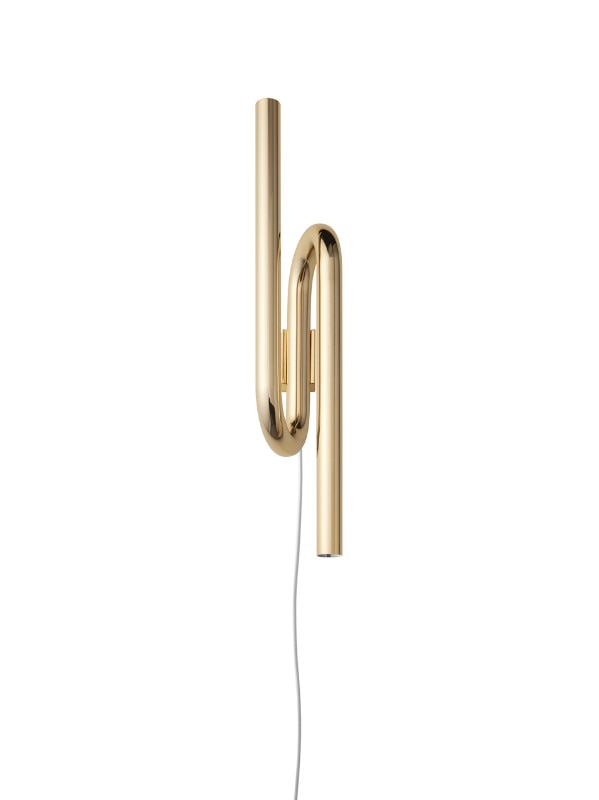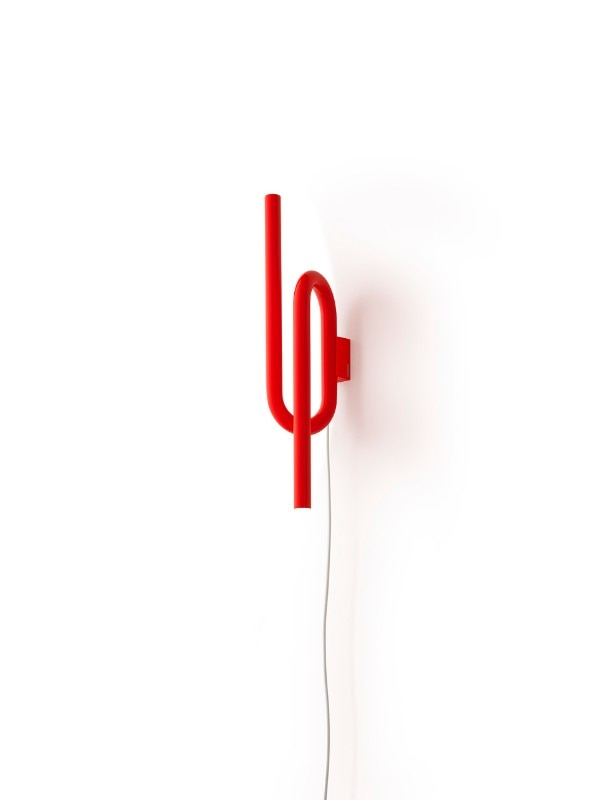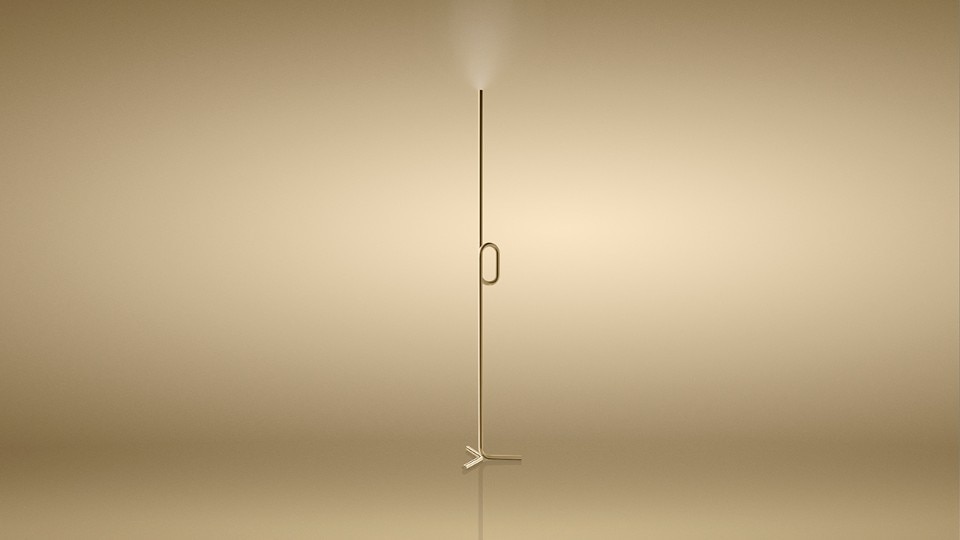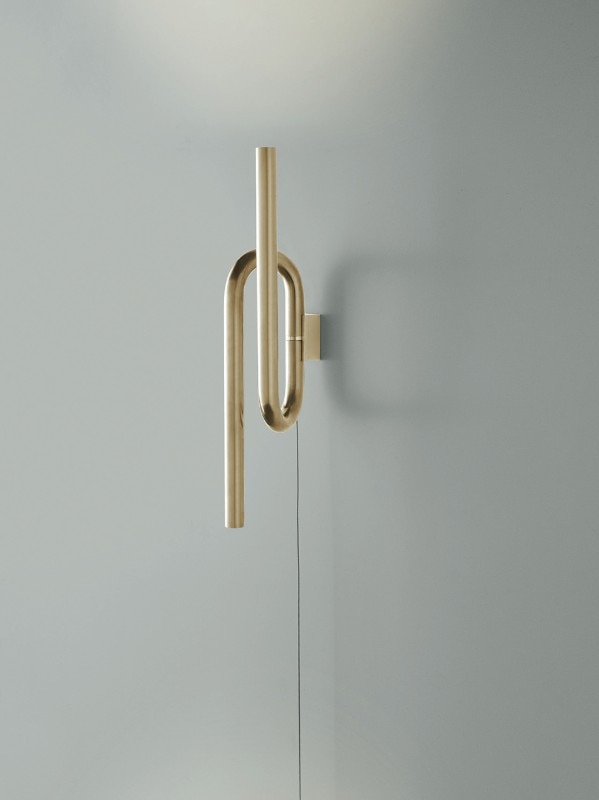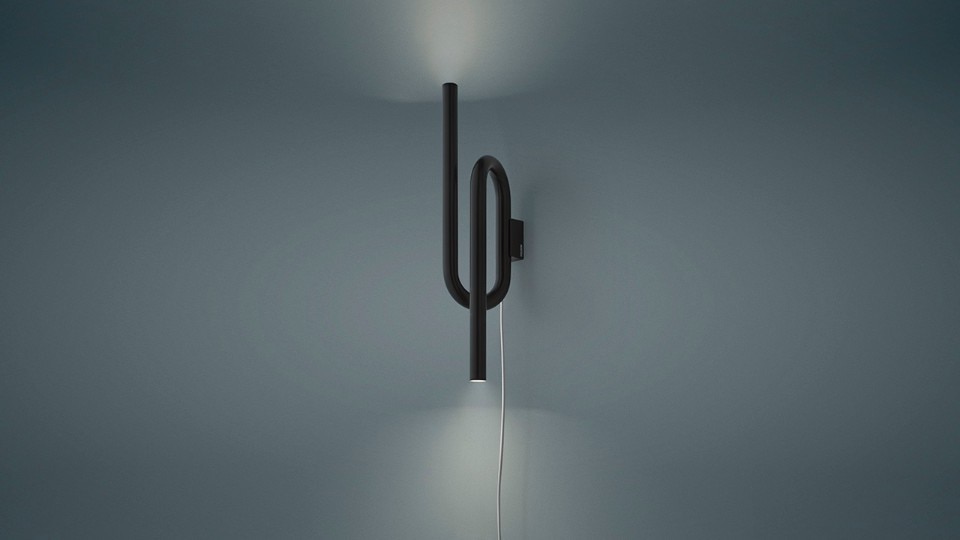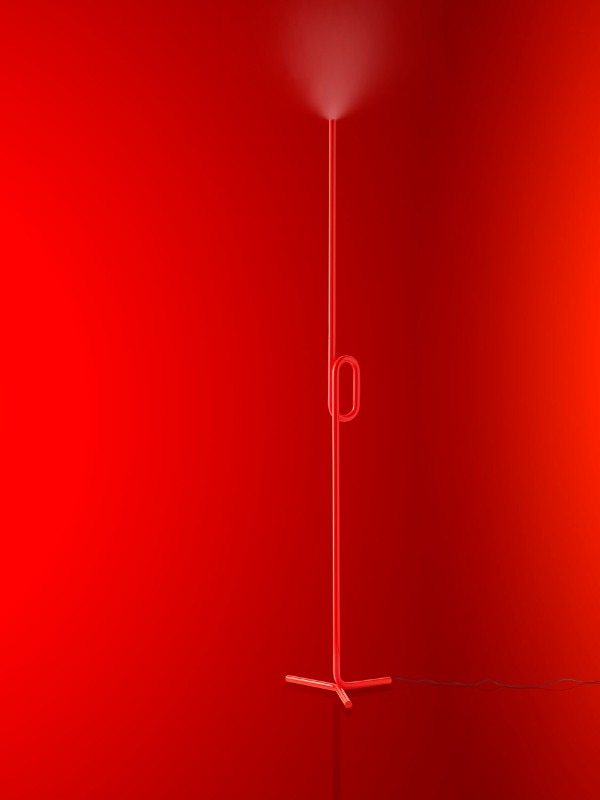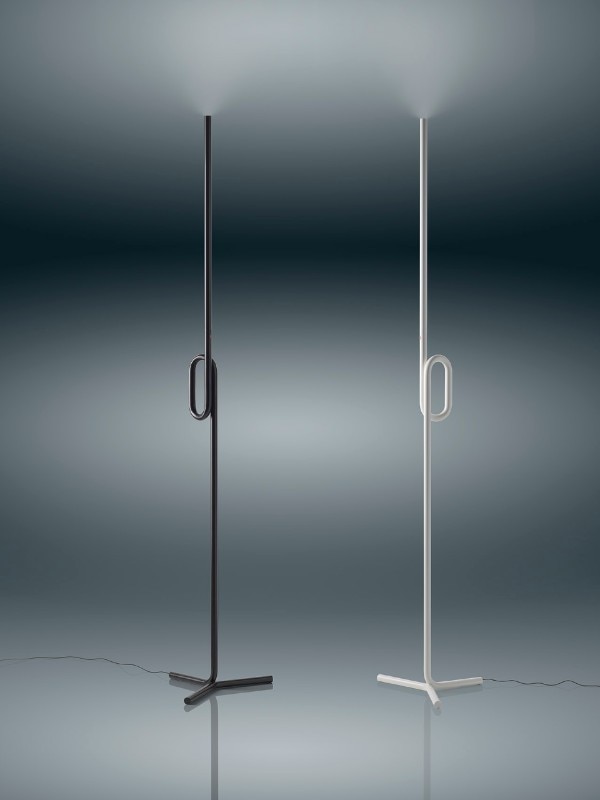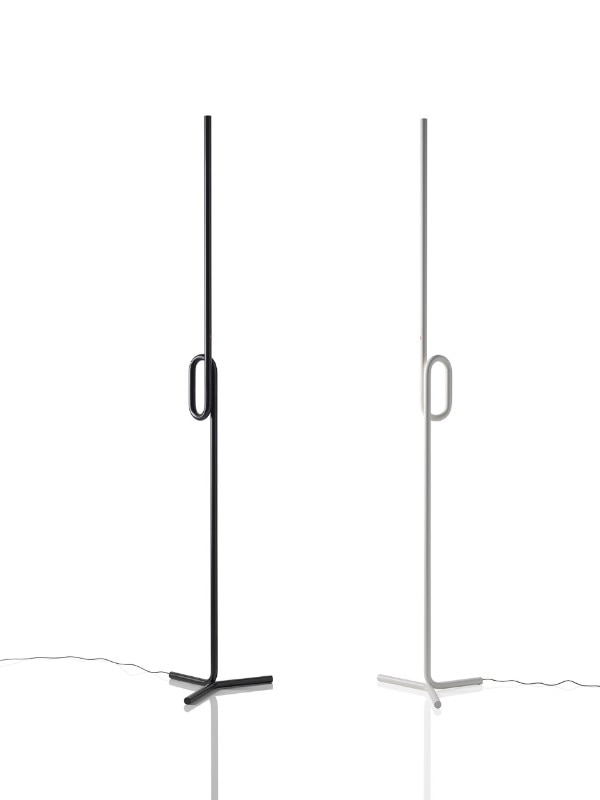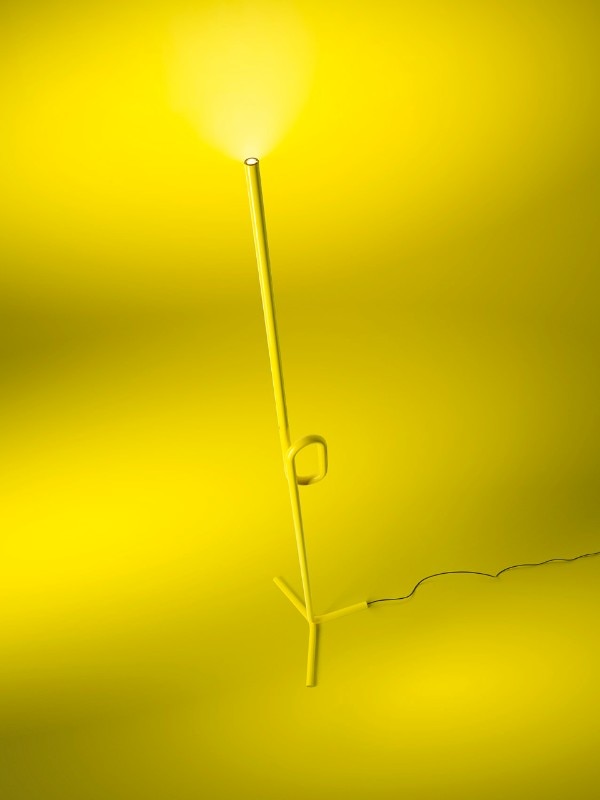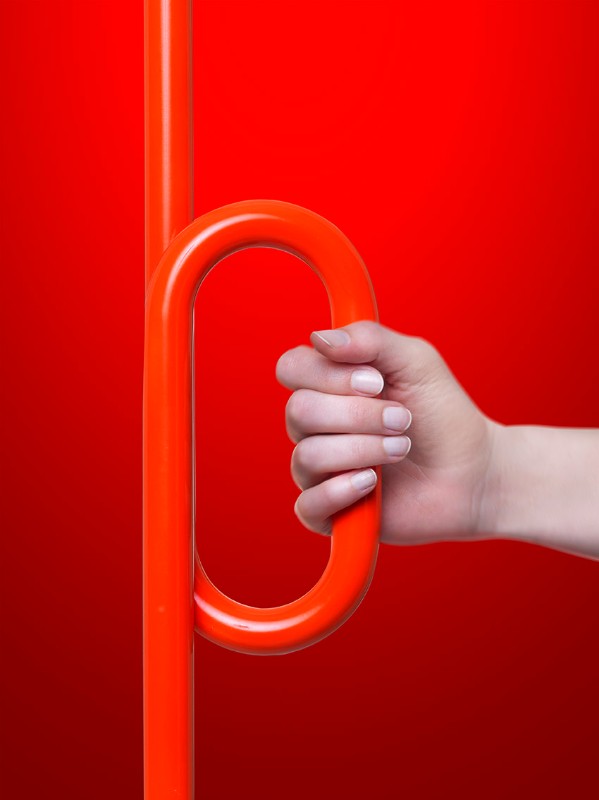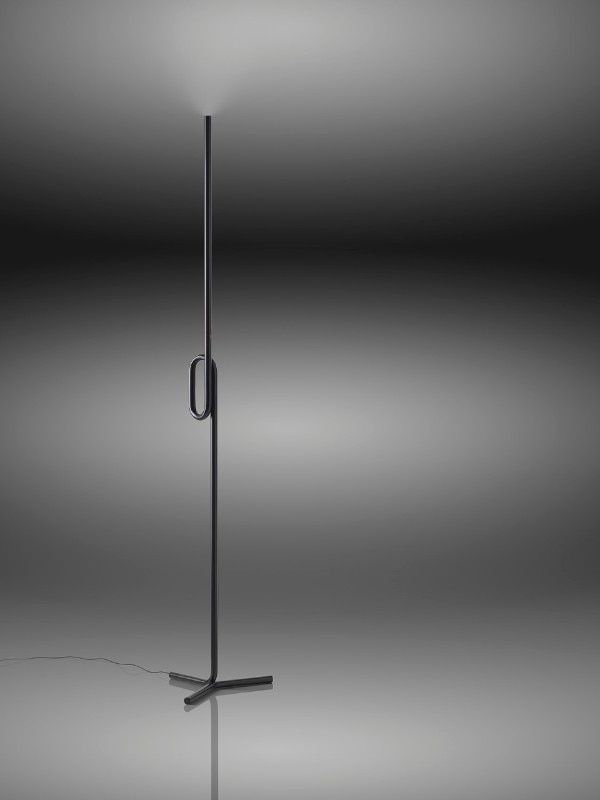“Tobia is a portable luminator, an almost nomadic piece: a floor lamp characterized by the central play of the tube, which invites the socket, and by a powerful direct light projected upwards, which becomes by refraction ambient diffused light”. Ferruccio Laviani, originally from Cremona, Italy, born in 1960, a studio in Milan founded in 1991 after being associated with Michele De Lucchi, describes his latest lamp for Foscarini, presented in 2019 and recently available on the catalogue. Starting from the luminator typology – a floor lamp with indirect lighting and fixed diffuser that projects light onto the ceiling, first launched by Luciano Baldessari in 1929 – Laviani designs an essential object that has flexibility and extreme functionality as its strong points. The central node is not only a graphic gesture, but also a handle to move the lamp easily, even in the wall version, with the light emitted by the two ends of the lamp: upwards (a power light) or downwards (more subtle). Another strong point is the range of colours that make it an object suitable for almost any environment: from the minimalist versions in black and white to the more pop versions in fluorescent colours.
Who’s gonna like Tobia?
It’s a lamp, which focuses on simplicity and technology and is designed to be transversal. It is a functional lamp, a LED floor lamp. The different finishes, more or less marked, make it a passe-partout capable of meeting the needs of a fairly wide range of people. The fluorescent red colour, for example, has a strong graphic sign; the golden finish, on the other hand, is more attractive and is linked to classic furniture. Tobia recovers the legacy of floor lamps from the 1980s, such as the Callimaco by Ettore Sottsass (1982), but also the Funnel by Ignazio Gardella and Caccia Dominioni (1954). This type – indirect light, aimed at the ceiling, which falls on the room – worked well with halogen lamps until the 1990s. Then, it became a bit obsolete. In the 2000s, on the other hand, the development of LED technology led to the minimization of the light source, which was thinner and more powerful with minimal shapes and the same lighting performance. Today lamps are almost magical objects: they do without making you understand where they come from.
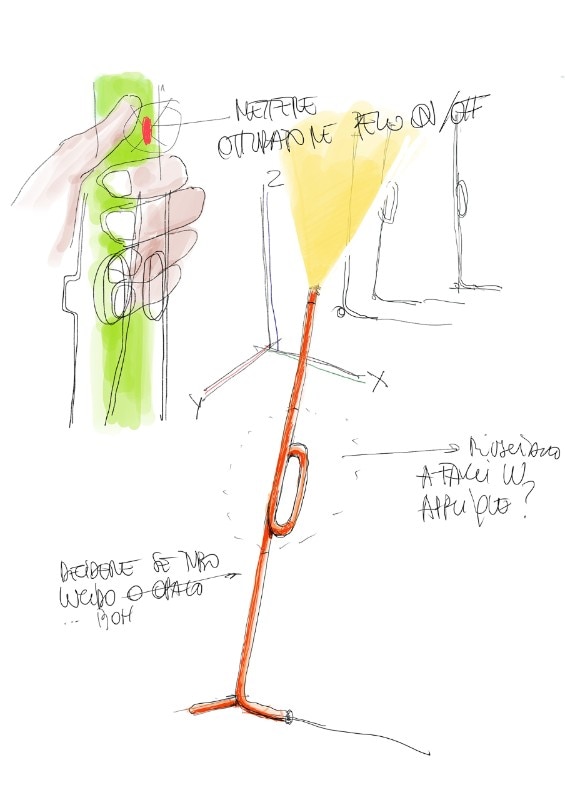
What materials did you use and why?
The aluminum for the most internal parts to dissipate the heat of the led, while maintaining an important power, I wanted a beautiful light and not just a graphic sign. The lamp is very well industrialized, so I used a minimum amount of material.
Why did you choose the name Tobia?
My most successful lamps started with T: Tuareg, Taj, Toobe... And then it is a tribute to Carlo Scarpa. Finally, I wanted it to be a name in person to make the lamp more "friendly".
What was the starting point? And the source of inspiration?
The typology is that of the luminator, the decorative inspiration recalls a bit Memphis, a postmodern iconography.
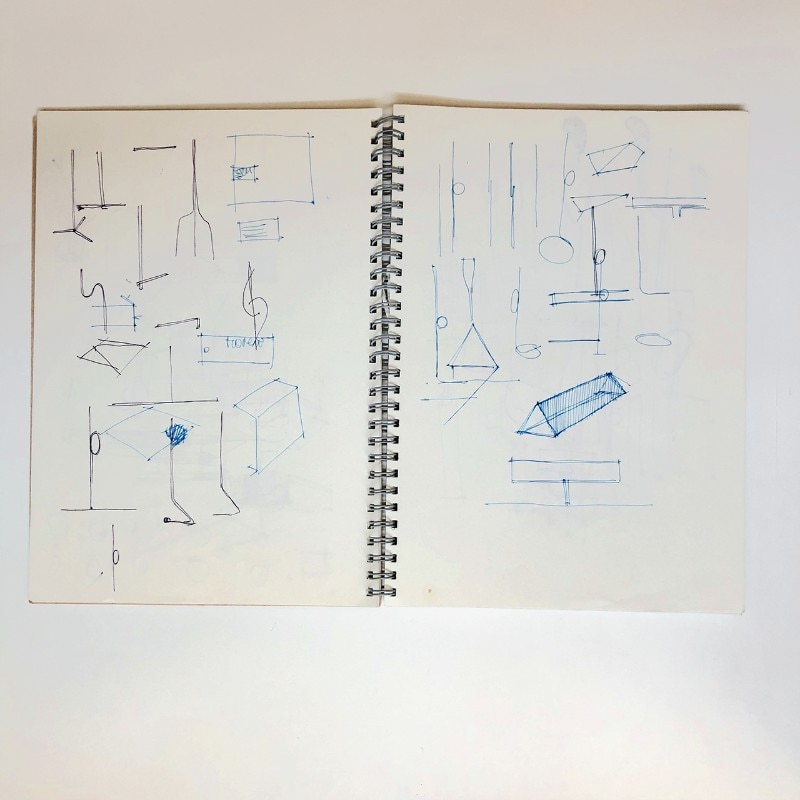
A designer you admire and why?
There are so many... I come from the 1980s, I am the son of Memphis, I admire those companies that made the history of design between the end of the 1980s and the beginning of 2000: Cappellini, Moroso, Driade... Companies that brought industrial products to the highest artistic connotation, without losing their industrial character. I greatly admire the work of Antonio Citterio as art director of B&B, T70, Arflex. It's difficult to choose an architect or a designer; the inspirations sometimes come from many people: Achille, Rodolfo, Michele... Without them I don't think my creativity would exist.
I admire those companies that made the history of design between the end of the 1980s and the beginning of 2000: Cappellini, Moroso, Driade... Companies that brought industrial products to the highest artistic connotation, without losing their industrial character.
Is there a routine in your work?
I arrive at the studio very early in the morning and leave late at night. When I'm in the office, I get a bit of a buzz, but when I go out, I do something else. My creative reload is to take a clean break. I'm regular at work. In the studio there are no big structural roles: we work close together and we design together.
What is the perfect environment to design? Music or silence?
I live on music, I could never design in silence.
Which music do you listen to?
Everything: from psychedelic acid to rap, to eighties disco... Mine is a "shuffle" listening.
What did you dream of when you were eight?
Anything but what I do now. I liked drawing, but nothing that said I wanted to be an artist. I had started attending the school of violin making in Cremona, but then I left it to become a furniture designer: it was my salvation. From there my father enrolled me in the Architecture course at the Politecnico and then in the Scuola Politecnica di Design, my parents՚ last investment. As a child, I dreamed of becoming an Egyptologist: Egypt and Cairo are the places I still have in my heart, I often go there; the attraction for that culture, that history and that architecture remains very important to me, like when I was 7-8 years old and I read about the ancient Egyptians in the encyclopedia. The Cairo Museum is one of the most amazing places in the world.
As a child, I dreamed of becoming an Egyptologist: Egypt and Cairo are the places I still have in my heart.
Speaking as a designer, art director and curator, what do you think is the worst flaw in a client?
When you don't believe what you say, the worst thing is when they call you because of what you are more than what you do. These are relationships destined to last for a short time. Instead, I have 30-year relationships with a lot of companies. There are ups and downs, like in old couples, but together you change and grow. With Kartell Foscarini, Molteni Dada, I՚ve had fundamental relationships because trust is always difficult to gain from results. I prefer a client who has a little budget, if he has a real project he believes in.
Three qualities of a successful object
First, others must like it, because an industrial design product has to sell. Nobody needs a new chair or sofa, so people have to fall in love with a new product. Then, it must be innovative and open the way for other products to follow. Finally, it must make me proud. The rest is personal vision and I always try to leave it in the background, otherwise I would have been an artist.
A successful object, first of all, must be liked by people, because an industrial design product has to sell.
Is there still an Italian style in design?
It has always existed and is not finished. The real design is Italian: almost all international designers have made their bones here. I think Italian design is an object produced in Italy, but made internationally. It would be difficult to replicate this model elsewhere. I՚m not particularly parochial, sometimes it՚s ourselves who are unable to defend our home. Italian design is a concept that goes far beyond style.
What's at the top of your bucket list?
Right now, that you find a vaccine against Covid-19, so that everything goes back to the way it was before, even if it will be very difficult. This experience has taught us to live day to day, to meet everyday needs and be realistic. We have to make a general project, like the bike lanes for Milan. We realised how much an architecture that takes into account an external outlet is worth, even a tiny balcony. We have to rethink the internal distribution of our houses, design new spaces for families. These are the important things we realised during the pandemic: doing things for today, not for tomorrow. We must not repeat the mistake of thinking too far ahead.
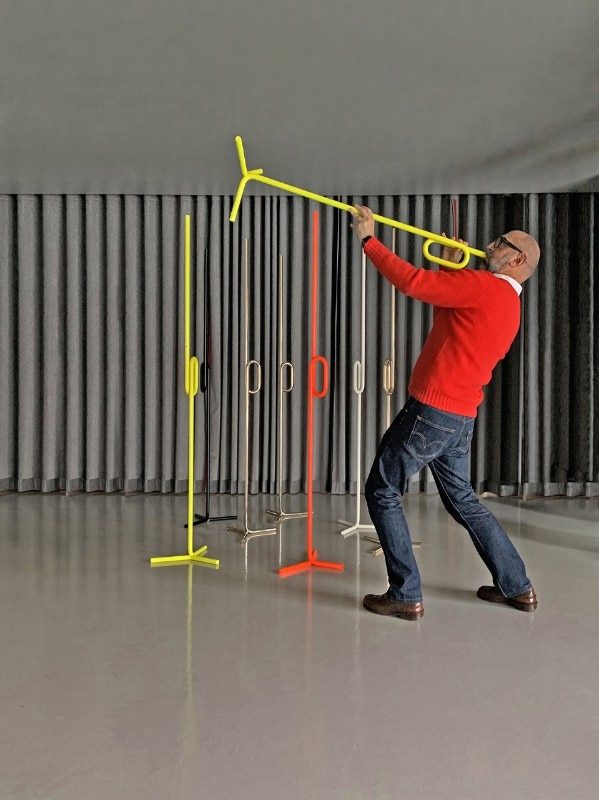
- Product name:
- Tobia
- Designer:
- Ferruccio Laviani
- Company:
- Foscarini
- Year of production:
- 2020


